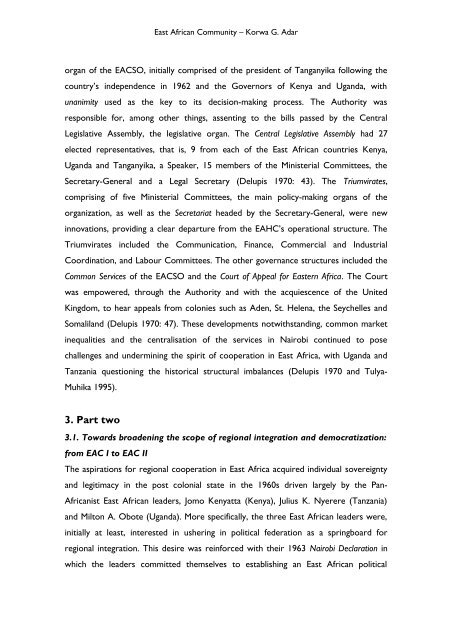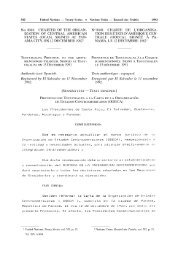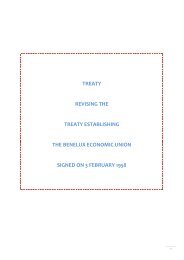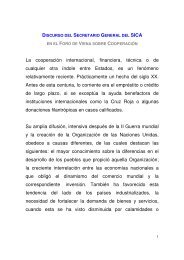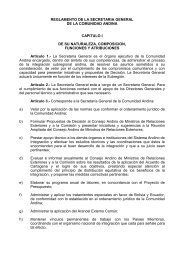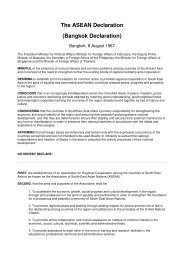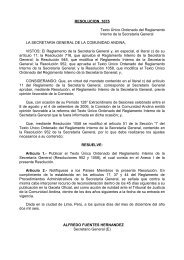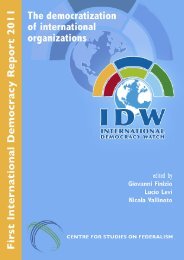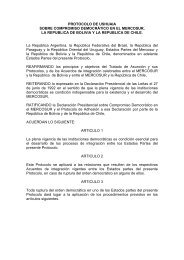Korwa G. Adar - International Democracy Watch
Korwa G. Adar - International Democracy Watch
Korwa G. Adar - International Democracy Watch
You also want an ePaper? Increase the reach of your titles
YUMPU automatically turns print PDFs into web optimized ePapers that Google loves.
East African Community – <strong>Korwa</strong> G. <strong>Adar</strong>organ of the EACSO, initially comprised of the president of Tanganyika following thecountry’s independence in 1962 and the Governors of Kenya and Uganda, withunanimity used as the key to its decision-making process. The Authority wasresponsible for, among other things, assenting to the bills passed by the CentralLegislative Assembly, the legislative organ. The Central Legislative Assembly had 27elected representatives, that is, 9 from each of the East African countries Kenya,Uganda and Tanganyika, a Speaker, 15 members of the Ministerial Committees, theSecretary-General and a Legal Secretary (Delupis 1970: 43). The Triumvirates,comprising of five Ministerial Committees, the main policy-making organs of theorganization, as well as the Secretariat headed by the Secretary-General, were newinnovations, providing a clear departure from the EAHC’s operational structure. TheTriumvirates included the Communication, Finance, Commercial and IndustrialCoordination, and Labour Committees. The other governance structures included theCommon Services of the EACSO and the Court of Appeal for Eastern Africa. The Courtwas empowered, through the Authority and with the acquiescence of the UnitedKingdom, to hear appeals from colonies such as Aden, St. Helena, the Seychelles andSomaliland (Delupis 1970: 47). These developments notwithstanding, common marketinequalities and the centralisation of the services in Nairobi continued to posechallenges and undermining the spirit of cooperation in East Africa, with Uganda andTanzania questioning the historical structural imbalances (Delupis 1970 and Tulya-Muhika 1995).3. Part two3.1. Towards broadening the scope of regional integration and democratization:from EAC I to EAC IIThe aspirations for regional cooperation in East Africa acquired individual sovereigntyand legitimacy in the post colonial state in the 1960s driven largely by the Pan-Africanist East African leaders, Jomo Kenyatta (Kenya), Julius K. Nyerere (Tanzania)and Milton A. Obote (Uganda). More specifically, the three East African leaders were,initially at least, interested in ushering in political federation as a springboard forregional integration. This desire was reinforced with their 1963 Nairobi Declaration inwhich the leaders committed themselves to establishing an East African political


